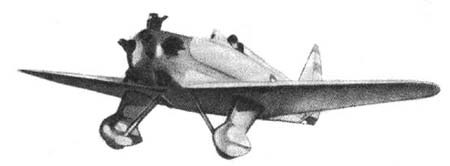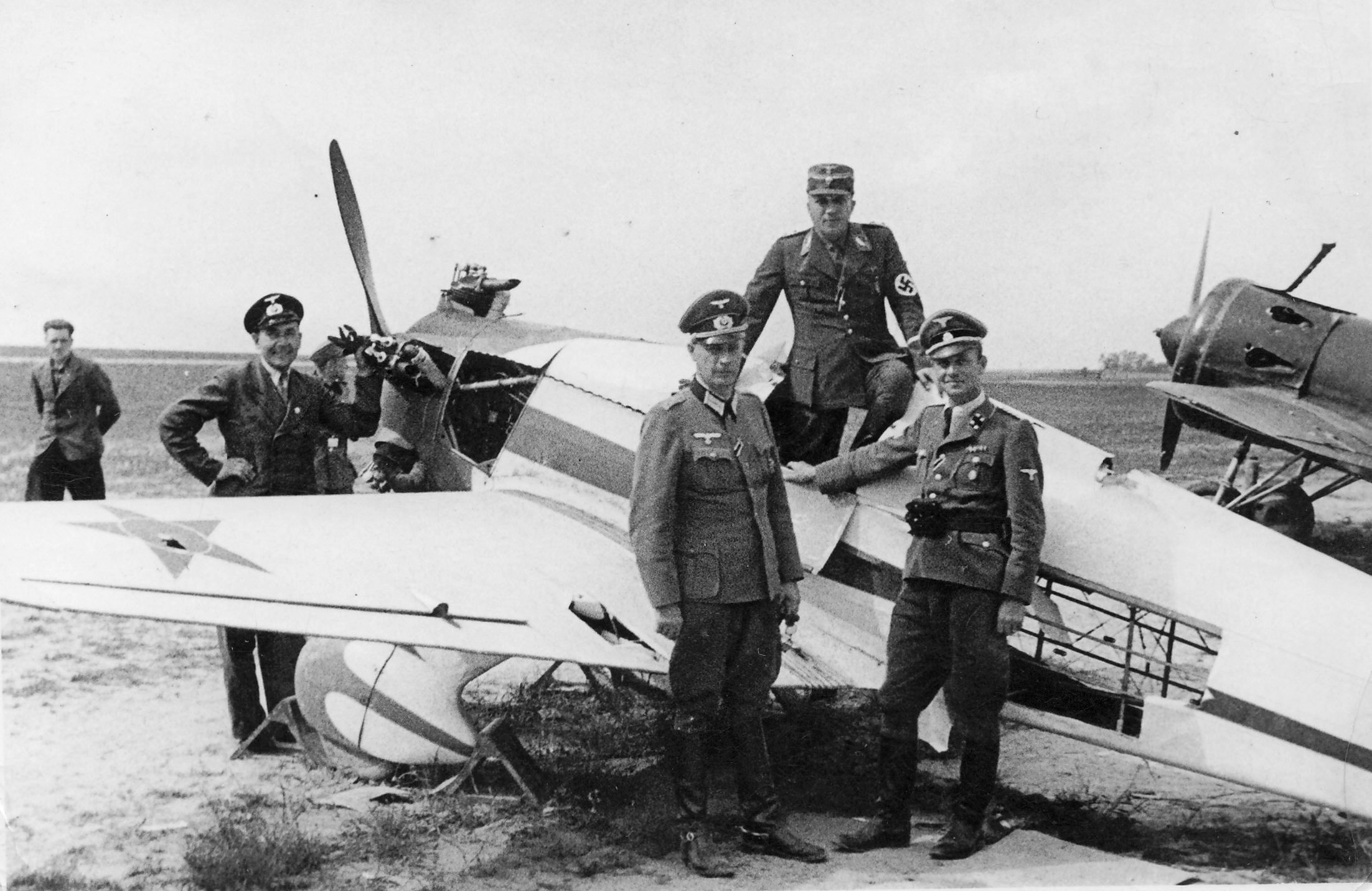|
Katya Budanova
Yekaterina Vasilyevna Budanova (russian: –ï–Κ–Α―²–Β―Ä–Η–Ϋ–Α –£–Α―¹–Η–Μ―¨–Β–≤–Ϋ–Α –ë―É–¥–Α–Ϋ–Ψ–≤–Α), nicknamed Katya (–ö–Α―²―è) (6 December 1916 βÄ™ 19 July 1943), was a fighter pilot in the Soviet Air Force during World War II. Usually credited with five or more aerial victories,Jackson 2003, p. 57. along with Lydia Litvyak, she is often considered one of the world's two female fighter aces. She was shot down by either Luftwaffe ace Georg Schwientek of ''JG 52'' or ace Emil Bitsch, of ''JG 3''. Early life Budanova was born into a peasant family in Konoplanka village in Smolensk Governorate. After leaving elementary school with the highest grades, she had to abandon her studies due to her father's death, and began working as a nanny. At the age of thirteen her mother sent her to join her sister in Moscow, where she began working as a carpenter in an aircraft factory.Milanetti, p. 126. It was there that she began an interest in aviation, and she joined an aeroclub's parachutis ... [...More Info...] [...Related Items...] OR: [Wikipedia] [Google] [Baidu] |
Smolensk Governorate
Smolensk Governorate (russian: –Γ–Φ–Ψ–Μ–Β–Ϋ―¹–Κ–Α―è –≥―É–±–Β―Ä–Ϋ–Η―è, Smolenskaja gubernija), or the Government of Smolensk, was an administrative division (a '' guberniya'') of the Tsardom of Russia, the Russian Empire, and the Russian SFSR. It existed, with interruptions, between 1708 and 1929. Smolensk Governorate, together with seven other governorates, was established on , 1708, by an edict from Tsar Peter the Great.–Θ–Κ–Α–Ζ –Ψ–± ―É―΅―Ä–Β–Ε–¥–Β–Ϋ–Η–Η –≥―É–±–Β―Ä–Ϋ–Η–Ι –Η –Ψ ―Ä–Ψ―¹–Ω–Η―¹–Α–Ϋ–Η–Η –Κ –Ϋ–Η–Φ –≥–Ψ―Ä–Ψ–¥–Ψ–≤ As with the rest of the governorates, neither the borders nor internal subdivisions of Smolensk Governorate were defined; instead, the territory was defined as a set of cities, and section of lands adjacent to those ... [...More Info...] [...Related Items...] OR: [Wikipedia] [Google] [Baidu] |
Yakovlev UT-1
The Yakovlev UT-1 (russian: –·–Κ–Ψ–≤–Μ–Β–≤ –Θ–Δ-1) was a single-seater trainer aircraft used by the Soviet Air Force from 1937 until the late 1940s. Development The Yakovlev UT-1 was designed as a single-seater advanced trainer and aerobatic airplane by the team led by Alexander Sergeyevich Yakovlev. The first prototype, designated the AIR-14, was flown in early 1936.Gunston 1995, 457 The AIR-14 was a small low-winged monoplane with a fixed tailwheel undercarriage, with a welded steel fuselage and wooden wings. After some changes, the AIR-14 was accepted for production. Among other improvements, the 75 kW (100 hp) Shvetsov M-11 radial was changed to the more powerful 86 kW (115 hp) M-11G. The plane received the designation UT-1 (''uchebno-trenirovochnyi'' , primary/advanced trainer); despite this designation, it was not suitable for primary training. The UT-1 was used as a transitional type between the UT-2 and fighters like the I-16. It was not easy to f ... [...More Info...] [...Related Items...] OR: [Wikipedia] [Google] [Baidu] |
Raisa Belyaeva
Raisa Vasilyevna Belyayeva (russian: –†–Α–Η―¹–Α –£–Α―¹–Η–Μ―¨–Β–≤–Ϋ–Α –ë–Β–Μ―è–Β–≤–Α; 25 December 1912 19 July 1943) was one of the first Russian female fighter pilots. She fought alongside Lydia Litvyak and was credited with up to three aerial victories. She died in combat, from causes unknown, in 1943. Early life Belyayeva attended a technical institute for tanners in Kirov. After graduation she asked her old friend Olga Yamshchikova, a Leningrad flight instructor, to teach her to fly. Belyayeva soon proved herself an enthusiastic and indefatigable alumna. Before the war, she accumulated more than a 1,000 hours flight time and a hundred parachute jumps, instructing hundreds of parachutists. She also took part in many airshows over Tushino airfield, near Moscow. Military career She took part in the Battle of Stalingrad and flew as an escort pilot for Nikita Khrushchev Nikita Sergeyevich Khrushchev (βÄ™ 11 September 1971) was the First Secretary of the Communist Par ... [...More Info...] [...Related Items...] OR: [Wikipedia] [Google] [Baidu] |
Mariya Kuznetsova (pilot)
Mariya Mikhailovna Kuznetsova (russian: –€–Α―Ä–Η―è –€–Η―Ö–Α–Ι–Μ–Ψ–≤–Ϋ–Α –ö―É–Ζ–Ϋ–Β―Ü–Ψ–≤–Α; 14 April 1918 12 October 1990) was a Soviet fighter pilot who originally flew with the women's 586th Fighter Aviation Regiment but was later transferred to the 437th Fighter Aviation Regiment with Yekaterina Budanova, Lydia Litvyak, and several other members of the unit in September 1942. While she did not become an ace, she made it through Battle of Stalingrad unlike many of her colleagues transferred there. Civilian life Kuznetsova was born on 4 April 1918 to a Russian peasant family in Yazvishchi village, Moscow Governorate, RSFSR. She began flying when she was 18, but her father was arrested during the Red Terror in 1937, forcing her to note the arrest in applications and documents, resulting in her being kicked out of flight training several times for being related to an "enemy of the people"; however, her friends spoke up on her behalf and managed to convince the head of the flig ... [...More Info...] [...Related Items...] OR: [Wikipedia] [Google] [Baidu] |
Battle Of Stalingrad
The Battle of Stalingrad (23 August 19422 February 1943) was a major battle on the Eastern Front of World War II where Nazi Germany and its allies unsuccessfully fought the Soviet Union for control of the city of Stalingrad (later renamed to Volgograd) in Southern Russia. The battle was marked by fierce close-quarters combat and direct assaults on civilians in air raids, with the battle epitomizing urban warfare. The Battle of Stalingrad was the deadliest battle to take place during the Second World War and is one of the bloodiest battles in the history of warfare, with an estimated 2 million total casualties. Today, the Battle of Stalingrad is universally regarded as the turning point in the European Theatre of war, as it forced the '' Oberkommando der Wehrmacht'' (German High Command) to withdraw considerable military forces from other areas in occupied Europe to replace German losses on the Eastern Front, ending with the rout of the six field armies of Army ... [...More Info...] [...Related Items...] OR: [Wikipedia] [Google] [Baidu] |
Saratov
Saratov (, ; rus, –Γ–Α―Ä–ΑΧ¹―²–Ψ–≤, a=Ru-Saratov.ogg, p=s…êΥàrat…ôf) is the largest city and administrative center of Saratov Oblast, Russia, and a major port on the Volga River upstream (north) of Volgograd. Saratov had a population of 901,361, making it the 17th-largest city in Russia by population. Saratov is from Volgograd, from Samara, and southeast of Moscow. The city stands near the site of Uvek, a city of the Golden Horde. Tsar Feodor I of Russia likely developed Saratov as a fortress to secure Russia's southeastern border. Saratov developed as a shipping port along the Volga and was historically important to the Volga Germans, who settled in large numbers in the city before they were expelled after World War II. Saratov is home to a number of cultural and educational institutions, including the Saratov Drama Theater, Saratov Conservatory, Radishchev Art Museum, Saratov State Technical University, and Saratov State University. Etymology The na ... [...More Info...] [...Related Items...] OR: [Wikipedia] [Google] [Baidu] |
Tamara Kazarinova
Tamara Aleksandrovna Kazarinova (russian: –Δ–Α–Φ–Α―Ä–Α –ê–Μ–Β–Κ―¹–Α–Ϋ–¥―Ä–Ψ–≤–Ϋ–Α –ö–Α–Ζ–Α―Ä–Η–Ϋ–Ψ–≤–Α; 9 July 1906 βÄ™ 4 August 1956) was a Soviet pilot and the commander of the 586th Fighter Aviation Regiment during the Second World War until she was transferred to the General Directorate of Fighter Aviation Defense. Early life Kazarinova graduated from the Leningrad Military Theory Air Force School in 1929 with excellent marks and the Kachin Military Pilots School in 1931. Before entering flight school with recommendations from the Komsomol she worked at a factory in Moscow. Since she was the first female cadet to enter the Leningrad school she had to live in an apartment off-campus while she studied. After completing further training in Kachin she served as a flight instructor and rose through the ranks to become a squadron commander in an assault aviation unit. She received the Order of Lenin, one of the highest Soviet awards, in 1937 during the height of the Great Purge and ... [...More Info...] [...Related Items...] OR: [Wikipedia] [Google] [Baidu] |
Night Witches
"Night Witches" (german: die Nachthexen; russian: –ù–Ψ―΅–Ϋ―΄–Β –≤–Β–¥―¨–Φ―΄, ) was a World War II German nickname for the all-female military aviators of the 588th Night Bomber Regiment, known later as the 46th "Taman" Guards Night Bomber Aviation Regiment, of the Soviet Air Forces. Though women were officially barred from combat at the time, Major Marina Raskova used her position and personal contacts with the Soviet leader Joseph Stalin to obtain permission to form female combat units. "Combat facilitated and ushered in a reluctant acceptance of women in military, based more upon practicality and necessity than for equality". On October 8, 1941, an order was issued to deploy three women's air-force units, including the 588th Regiment. The regiment, formed by Raskova and led by Major Yevdokiya Bershanskaya, was composed primarily of female volunteers in their late teens and early twenties. An attack technique of the night bombers involved idling the engine near the target and ... [...More Info...] [...Related Items...] OR: [Wikipedia] [Google] [Baidu] |
125th Guards Dive Bomber Regiment
The 125th Borisov Guards Bomber Aviation Regiment named after Marina Raskova () was one of the three Soviet women's aviation regiments founded by Marina Raskova at the start of the Second World War. The unit was founded as the 587th Bomber Aviation Regiment in the 223rd Bomber Air Division, 2nd Bomber Aviation Corps of the 16th Air Army on 8 October 1941, and later honored with the guards designation, being renamed 125th Guards Bomber Aviation Regiment in September 1943 and reorganized into 4th Guards Bomber Aviation Division, 1st Bomber Aviation Corps, 3rd Air Army, in the 1st Baltic Front. Unlike the 46th Taman Guards Night Bomber Aviation Regiment, which used Polikarpov Po-2 utility aircraft, the unit was assigned modern Petlyakov Pe-2 aircraft, which caused some resentment among male units that had older aircraft. Throughout the course of the war, the unit flew 1,134 missions and dropped over 980 tons of bombs on the Axis. Notable members Five members of the unit were awarded ... [...More Info...] [...Related Items...] OR: [Wikipedia] [Google] [Baidu] |
Yak-1
The Yakovlev Yak-1 (russian: –·–Κ–Ψ–≤–Μ–Β–≤ –·–Κ-1) was a Soviet fighter aircraft of World War II. The Yak-1 was a single-seat monoplane with a composite structure and wooden wings; production began in early 1940.Angelucci and Matricardi 1978, p. 239. The Yak-1 was a maneuverable, fast and competitive fighter aircraft. The composite-wooden structure made it easy to maintain and the engine proved to be reliable.Snedden 1997, p. 71. It formed the basis for subsequent developments from the Yakovlev bureau. It was the founder of a family of aircraft, with some 43,000 being built.Gunston 1998, p. 88.Ethell 1995, p. 163. As a reward, designer Alexander Yakovlev was awarded the Order of Lenin ( Russian ) (the highest civilian decoration bestowed by the Soviet Union), a 100,000 ruble prize, and a ZIS motor car.Jackson 2003, p. 160.Matricardi 2006, p. 77. Design and development Before the war, Yakovlev was best known for building light sports aircraft. His Yak-4 light bomber impre ... [...More Info...] [...Related Items...] OR: [Wikipedia] [Google] [Baidu] |





_side-view_silhouettes.png)